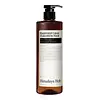What's inside
What's inside
 Key Ingredients
Key Ingredients

 Benefits
Benefits

 Concerns
Concerns

No concerns
 Ingredients Side-by-side
Ingredients Side-by-side

Water
Skin ConditioningTriethanolamine
BufferingStearic Acid
CleansingMyristic Acid
CleansingLactic Acid
BufferingGlycerin
HumectantCocamidopropyl Betaine
Cleansing1,2-Hexanediol
Skin ConditioningAcrylates Copolymer
Sodium Chloride
MaskingGlycol Distearate
EmollientSodium Benzoate
MaskingPropylene Glycol
HumectantHydroxyacetophenone
AntioxidantTocopheryl Acetate
AntioxidantParfum
MaskingTetrasodium EDTA
Salicylic Acid
MaskingNardostachys Jatamansi Rhizome/Root Extract
Skin ConditioningGluconolactone
Skin ConditioningCitric Acid
BufferingRosmarinus Officinalis Leaf Extract
AntimicrobialPrunus Armeniaca Kernel Oil
MaskingPortulaca Oleracea Extract
Skin ConditioningPanthenol
Skin ConditioningNiacinamide
SmoothingNelumbo Nucifera Extract
Skin ConditioningMelaleuca Alternifolia Leaf Extract
PerfumingEucalyptus Globulus Leaf Extract
PerfumingCentella Asiatica Extract
CleansingCamellia Sinensis Leaf Water
MaskingSodium Hyaluronate
HumectantSodium Hyaluronate Crosspolymer
HumectantPotassium Hyaluronate
Skin ConditioningHydroxypropyltrimonium Hyaluronate
Hydrolyzed Hyaluronic Acid
HumectantHyaluronic Acid
HumectantPentylene Glycol
Skin ConditioningSodium Acetylated Hyaluronate
HumectantWater, Triethanolamine, Stearic Acid, Myristic Acid, Lactic Acid, Glycerin, Cocamidopropyl Betaine, 1,2-Hexanediol, Acrylates Copolymer, Sodium Chloride, Glycol Distearate, Sodium Benzoate, Propylene Glycol, Hydroxyacetophenone, Tocopheryl Acetate, Parfum, Tetrasodium EDTA, Salicylic Acid, Nardostachys Jatamansi Rhizome/Root Extract, Gluconolactone, Citric Acid, Rosmarinus Officinalis Leaf Extract, Prunus Armeniaca Kernel Oil, Portulaca Oleracea Extract, Panthenol, Niacinamide, Nelumbo Nucifera Extract, Melaleuca Alternifolia Leaf Extract, Eucalyptus Globulus Leaf Extract, Centella Asiatica Extract, Camellia Sinensis Leaf Water, Sodium Hyaluronate, Sodium Hyaluronate Crosspolymer, Potassium Hyaluronate, Hydroxypropyltrimonium Hyaluronate, Hydrolyzed Hyaluronic Acid, Hyaluronic Acid, Pentylene Glycol, Sodium Acetylated Hyaluronate
Avena Sativa Seed Water 77%
SolventButylene Glycol
HumectantGlycerin
Humectant2,3-Butanediol
Humectant1,2-Hexanediol
Skin ConditioningWater
Skin ConditioningAmmonium Acryloyldimethyltaurate/Vp Copolymer
Squalane
EmollientHydroxyacetophenone
AntioxidantCarbomer
Emulsion StabilisingDipotassium Glycyrrhizate
HumectantPanthenol
Skin ConditioningTromethamine
BufferingEthylhexylglycerin
Skin ConditioningInulin Lauryl Carbamate
Emulsion StabilisingSodium Surfactin
CleansingBeta-Glucan
Skin ConditioningAvena Sativa Seed Water 77%, Butylene Glycol, Glycerin, 2,3-Butanediol, 1,2-Hexanediol, Water, Ammonium Acryloyldimethyltaurate/Vp Copolymer, Squalane, Hydroxyacetophenone, Carbomer, Dipotassium Glycyrrhizate, Panthenol, Tromethamine, Ethylhexylglycerin, Inulin Lauryl Carbamate, Sodium Surfactin, Beta-Glucan
 Reviews
Reviews

Ingredients Explained
These ingredients are found in both products.
Ingredients higher up in an ingredient list are typically present in a larger amount.
1,2-Hexanediol is a synthetic liquid and another multi-functional powerhouse.
It is a:
- Humectant, drawing moisture into the skin
- Emollient, helping to soften skin
- Solvent, dispersing and stabilizing formulas
- Preservative booster, enhancing the antimicrobial activity of other preservatives
Glycerin is already naturally found in your skin. It helps moisturize and protect your skin.
A study from 2016 found glycerin to be more effective as a humectant than AHAs and hyaluronic acid.
As a humectant, it helps the skin stay hydrated by pulling moisture to your skin. The low molecular weight of glycerin allows it to pull moisture into the deeper layers of your skin.
Hydrated skin improves your skin barrier; Your skin barrier helps protect against irritants and bacteria.
Glycerin has also been found to have antimicrobial and antiviral properties. Due to these properties, glycerin is often used in wound and burn treatments.
In cosmetics, glycerin is usually derived from plants such as soybean or palm. However, it can also be sourced from animals, such as tallow or animal fat.
This ingredient is organic, colorless, odorless, and non-toxic.
Glycerin is the name for this ingredient in American English. British English uses Glycerol/Glycerine.
Learn more about GlycerinHydroxyacetophenone is antioxidant with skin conditioning and soothing properties. It also boosts the efficiency of preservatives.
This ingredient is not irritating or sensitizing.
Panthenol is a common ingredient that helps hydrate and soothe the skin. It is found naturally in our skin and hair.
There are two forms of panthenol: D and L.
D-panthenol is also known as dexpanthenol. Most cosmetics use dexpanthenol or a mixture of D and L-panthenol.
Panthenol is famous due to its ability to go deeper into the skin's layers. Using this ingredient has numerous pros (and no cons):
Like hyaluronic acid, panthenol is a humectant. Humectants are able to bind and hold large amounts of water to keep skin hydrated.
This ingredient works well for wound healing. It works by increasing tissue in the wound and helps close open wounds.
Once oxidized, panthenol converts to pantothenic acid. Panthothenic acid is found in all living cells.
This ingredient is also referred to as pro-vitamin B5.
Learn more about PanthenolWater. It's the most common cosmetic ingredient of all. You'll usually see it at the top of ingredient lists, meaning that it makes up the largest part of the product.
So why is it so popular? Water most often acts as a solvent - this means that it helps dissolve other ingredients into the formulation.
You'll also recognize water as that liquid we all need to stay alive. If you see this, drink a glass of water. Stay hydrated!
Learn more about Water